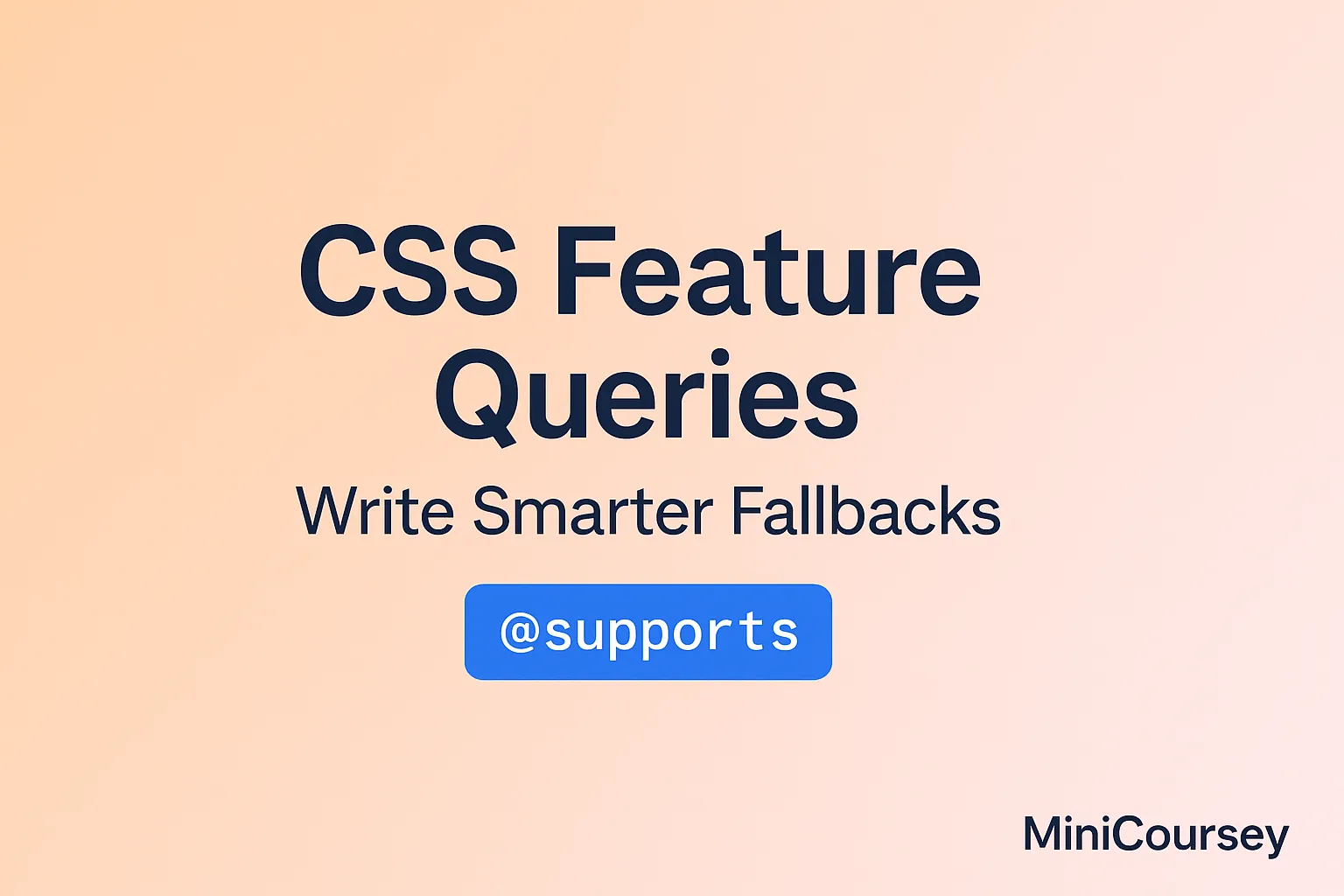Ever want to use a shiny new CSS feature but worry about breaking things for older browsers? That’s where CSS feature queries come in! With @supports, you can check if a browser understands a specific property or value, then apply styles conditionally. This means you can use modern CSS safely with smart fallbacks. In this MiniCoursey quick guide, you’ll learn how feature queries work, when to use them, and best practices for writing resilient, future-friendly CSS.
What Are Feature Queries?
Feature queries use the @supports at-rule to test if the browser supports a CSS feature. If the condition is true, the enclosed styles apply.
Basic Syntax
Wrap your modern CSS inside @supports and provide a fallback outside it.
.button {
display: block;
}
@supports (display: grid) {
.button {
display: grid;
}
}
In this example, browsers that don’t support Grid still render .button as block.
Why Use Feature Queries?
- Safely use new features without hurting older browsers.
- Keep your CSS future-friendly and progressive.
- Write cleaner, conditional fallbacks instead of messy hacks.
💡 Pro Tip: Combine with modern layout tools — wrap Grid or Flex features in
@supportsfor robust, layered CSS.
⚠️ Common Mistake: Don’t over-nest
@supports— keep it clear and readable.
FAQ
Q: Do all browsers support feature queries?
A: Yes — they’re widely supported in modern browsers, so they’re safe to use for most projects.
Q: Can I combine multiple conditions?
A: Absolutely! Use and, or, and not inside @supports.
Related Link
👉 Check out previous: CSS Logical Properties — Build Truly Global Layouts
Where to Learn More
Explore MDN’s @supports docs for advanced examples and syntax tricks.
Conclusion
Congrats — you now know how to use CSS feature queries to write smarter, safer, future-proof CSS!
✨ Bookmark MiniCoursey for more quick & free mini courses!


1 thought on “CSS Feature Queries — Write Smarter Fallbacks”